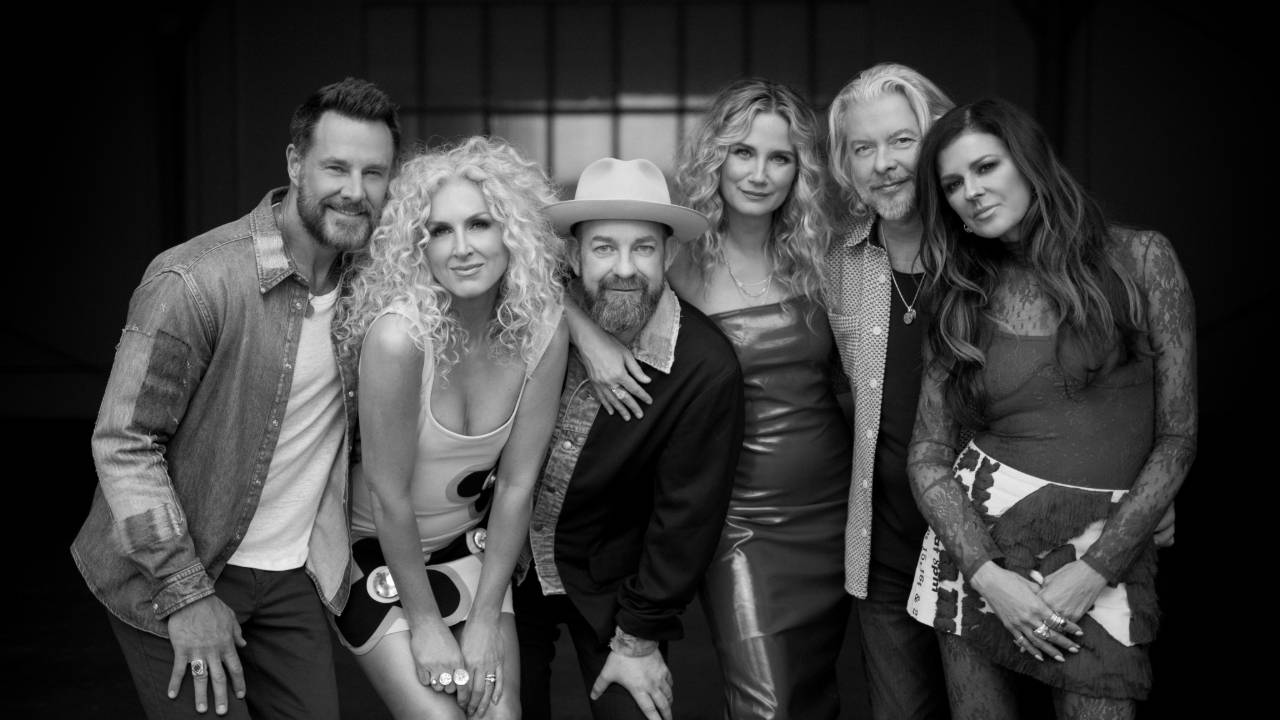Monroe's Cherished Mandolin Finds a Home at the Hall of Fame
The "most famous mandolin ever played," as one admirer described it, now resides at the Country Music Hall of Fame and Museum. Philanthropist Robert W. "Bob" McLean donated Bill Monroe's 1923 Gibson F-5 model instrument to the Museum during a Tuesday (Sept. 13) ceremony in Nashville.
The donation coincided with the 94th anniversary of Monroe's birth and the 60th anniversary of the founding of his legendary band, the Blue Grass Boys, which gave the name to an entire genre of music. Monroe died Sept. 9, 1996.
The precious instrument, designed by Lloyd Loar, has had both an inspiring and a troubled history. Its quality added a dimension and sound to Monroe's music he had never achieved before, but it has been scarred and crushed by violent emotions and was lately the object of a fierce legal battle.
Monroe's friends and fans packed the Museum's Ford Theater to pay tribute to the Father of Bluegrass and hear Ricky Skaggs and his band, Kentucky Thunder, play several of Monroe's classics. Among the onlookers were Monroe's son, James, Earl Scruggs (who revolutionized banjo playing as an early member of the Blue Grass Boys), Vince Gill, Brenda Lee, Tony Conway (Monroe's longtime friend and talent agent) and Nashville Mayor Bill Purcell.
Although the donation had not been officially announced, many in the audience noticed the battered mandolin case lying open and empty on a table beside the stage. When Skaggs came on stage holding the distinctively shaped and scratched instrument, it became apparent this was more than the "birthday celebration" that had been publicized.
Skaggs opened the loosely scripted proceedings with "Mother's Not Dead." Then the Museum's executive director, Kyle Young, announced that this event was "one of the most important occasions in the history of country music." He confirmed Skaggs had been playing the music pioneer's mandolin and told how Monroe had purchased the Gibson at a barbershop in Florida for $150 around 1945.
Noting that Monroe had last played it on March 15, 1996, at the Grand Ole Opry, shortly before suffering a stroke, Young added, "Occasionally, like today, it will be heard again." He explained that the Museum, which has no acquisition fund, could not have secured the mandolin without the intervention of an "angel," whom he quickly identified as McLean. "I can't help it," he added, "but I think the arrival of this mandolin here was providential."
In 2001, the Bill Monroe Foundation attempted to buy the mandolin to be used as the centerpiece of a museum to be erected at Monroe's birthplace at Rosine, Ky. The prize was owned at the time by James Monroe, who priced it at $1.125 million. The foundation put a 10 percent down payment on the mandolin but was never able to pay the remainder. The Ohio County Industrial Foundation in Kentucky then sought to purchase the instrument in Kentucky for display at another museum. Ultimately, the matter went to court, but a sale was never finalized.
Last year, McLean presented the Museum with Mother Maybelle Carter's equally historic 1928 Gibson L-5 guitar, which a vintage guitar dealer had priced at $575,000. At the time, McLean observed, "This Museum couldn't have bought this guitar. They can't purchase Bill Monroe's Loar mandolin either. But this is where they both belong. They belong here because the soul of America lives here with them."
Young said the purchase agreement on the mandolin had been reached in June but added that the instrument had not arrived at the Museum until earlier Tuesday. He said details of the agreement will be kept private but noted later that Conway was closely involved with achieving the deal.
Alluding to the mandolin in his brief remarks, McLean noted, "It's playing music that tells a good story." He went on to cite a gallery of artists Monroe influenced -- from Skaggs to Alison Krauss to Dolly Parton to such mandolin adventurers as Sam Bush and Nickel Creek's Chris Thile. Explaining his zeal to donate the instrument, he added, "When no one owns it, everyone can own it." He said he worried about all the cultural treasures lost in Hurricane Katrina and implored young artists to think about donating their prize instruments when they reach the end of their careers. "Happy birthday, Maestro Monroe," he concluded.
James Monroe, speaking in a voice uncannily similar to his father's, recalled being taken to the Opry when he was a boy and of adjusting to his father's absences while he was on the road. He introduced his lawyers who had helped him conclude the transfer.
"The most compelling thing to me today," said Gill when he addressed the crowd, "was the sound of James' voice. ... I think we heard your daddy speaking." Gill continued, "People still talk about [Monroe], still tell stories." And he had one of his own to tell. He said he was "out at the Opry" early in his career when he got into a backstage jam session with Monroe and some others. When the session was over, Gill said, Monroe inquired, "Where's your wife, boy?" Gill recalled, "I said, I think she's home in bed,' and he said, 'You're not feeding her right, boy.'"
Later, one of Monroe's paramours became angry at him and smashed the mandolin into splinters with a fireplace poker, Gill continued. "So I called him and said, 'Doesn't look like you're feeding her right, boy.'" Fortunately, a Gibson craftsman, Charles Derrington, was able to repair the instrument by gluing the 500 or so fragments together -- and without diminishing the sound quality.
Gill also related how, in a fit of anger against Gibson, Monroe took a pocketknife and gouged out the company's nameplate. "That's the beauty of this mandolin," Gill said. "It's the Holy Grail. Most musicians think it's in the New Testament. And it ought to be."
When he and his band returned to the stage, Skaggs explained the mandolin was really Monroe's "partner." He explained that he had researched Monroe's recording history and that the master had written and recorded only two instrumental compositions before he bought the charmed instrument. (They were "Tennessee Blues" and "Honky Tonk Swing.") Afterward, Skaggs said, he wrote "countless hundreds" of instrumentals.
"This was sweet to his ears. This was what pulled me away from my toys."
Skaggs said he got his first mandolin when he was 5 years old and was soon playing at local churches and stores in and around Martha, Ky. When Monroe came to town for a show a year or so later, the homefolks shouted that he should let "Little Ricky Skaggs" play a tune. Skaggs says Monroe lifted him up on stage by one arm and asked, "What do you play, son?" When the youngster muttered that he played mandolin, Monroe took off his Gibson, adjusted the strap and let the boy have a go at it.
But it wasn't an entirely benign encounter, Skaggs noted. "He then sets me off the stage and does his most popular tune -- 'Muleskinner Blues' -- just to show me up."
Skaggs then resumed the music at Tuesday's ceremony, playing "It's Mighty Dark to Travel" and "Toy Heart." He related he once asked Monroe, "Mr. Bill, what does it take to be a good mandolin player?" He said Monroe got a faraway look in his eye, thought for a moment and said, "Well, boy, you've just got to whip it like a mule." So saying, Skaggs applied that advice to a supercharged version of "Bluegrass Breakdown," which earned him a standing ovation. He followed it with the ever-popular "Uncle Pen."
At the end of the ceremony, Young presented McLean with a plaque of appreciation. And the Grascals joined Skaggs and his band for a scorching romp through the Monroe showpiece, "Rawhide."





